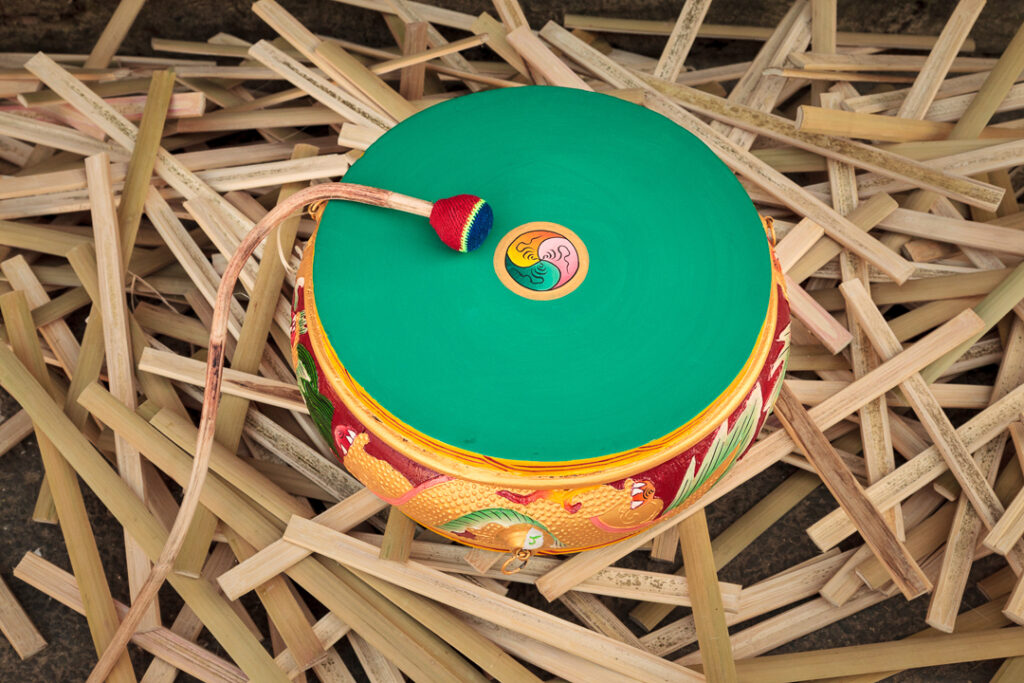
Gary Wornell follows the rhythmic beats to discover a busy workshop making Tibetan drums in downtown Kathmandu.
You hear them long before you see them. As I am lying in bed, listening to the early morning sounds of prayer bells, dogs barking, the cow in the yard below bellowing and cocks crowing, I become aware of the approaching beat of drums and brass horns. The rhythm is hard to find in the cacophony of wind instruments. I get up with my bed sheet wrapped around me and go out onto the terrace. In these narrow winding streets, the sound echoes off the brick and concrete houses and I see only the two dogs running about and playfully biting each other on the street below. I wait a while, as the sound gets closer and lean over the balcony to get a view of the main road up the hill, catching the procession just as it is passing.
There are so many festivals and celebrations here in Kathmandu that barely a day goes by when you don’t hear the sound of drums. Shamanic rituals are also practised extensively and drums play a key role. A few years ago, I was on a walk through the village of Dandabas in Makwanpur, the air dense with early morning fog and was drawn to the rhythmic beat of a drum coming from an open door by the side of the road. Inside a shaman decorated with a large necklace of bells was waving burning grass around the room and chanting, while another was beating his drum.
Smoke had filled the space making it difficult to see what was really going on, but through the fog and the smouldering grass I caught the silhouette of an elderly woman sitting cross-legged on a rice mat and beside her a goat in the middle of the room. I felt a certain intoxication with the sound: a strange magnetism drawing me into the rhythm. It seemed a very private thing that was going on so I left, but the haunting sound of the drum hung in the air like the mist penetrating through my clothing.
- A craftsman works on a large ceremonial drum at a workshop in Kapan, Kathmandu.
- Traditional drum maker family, Asan, Kathmandu.
- Purna Lama removes protective tape from the painted drum heads.
- A seamstress prepares drum cases on a treadle sewing machine at a workshop in Boudha.
The drum makers are everywhere. Across the city from Patan to the marketplace in Asan and Boudhanath Stupa small workshops open to the street, their wares stacked on rough wooden shelves in various states of completion. Dhamphu, Madal, Dhimay, Dholak, Madhalam, Dhyangro, Nayakhin. There are drums of all shapes and sizes for traditional folk music and religious purposes. Each ethnic group has their own percussion instruments.
Drum makers sit on flat cushions surrounded by skins with circular holes where the drumheads have been cut. The Madal, a native Nepali drum used as a timekeeper in traditional folk music looks like those I had seen in Tanzania. It is shaped from a hollowed-out log with skins on both ends tuned with leather straps and metal rings along the length of a red and black painted body. The Madal typically is made from a hollowed-out log with a slight bulge in the middle and a larger and smaller head giving different tones. A mix of flour, iron filings and egg is applied as a black circle to the double-layer goat skin heads, adding a bell-like resonance to the sound. Both heads are played with alternate strikes of the fingers of each hand setting up the rhythm.
Around the perimeter of Boudhanath and up the side streets small shops specialise in prayer beads, prayer flags, wooden carvings, drums, statues and incense. It is here that the Buddhist monks and Lamas buy their ceremonial items. It was here that I came to meet Purna Lama, a Tibetan drum maker, on a cool December morning.
Red velvet cloth, faded from the sun and dulled by the dust of the city, lined the wooden cabinets and shelves on either side of the narrow walkway through the shop. Dakinis, the large flat booming puja drums, hung against the walls with their vibrant turquoise painted skins and ornate painted decorations carved into the body next to randomly piled Damarus and their rich floral brocade cases.
In the yard at the back and in the bright sunlight of the day, a small group of men sat amongst piles of rough-cut wooden shapes; cross-legged and holding the blocks with their bare feet, filing or polishing or cutting the shapes with simple tools. Under the shelter near the door, a woman sat at an old treadle sewing machine in her thick woollen hat and down jacket, busily cutting fabric for the cases and running them through the machine.
Purna sat near the doorway, propped up on partly filled rice sacks beside piles of half-finished drums in tattered cardboard boxes, peeling masking tape from this batch of recently painted drumheads. The skins, traditionally goat or cow, are prepared locally by burying them in copper with mineral salts and sacred herbs. After being soaked in water and stretched over the heads they hang to dry before colour is applied.
Purna Lama’s workshop, KB Handicrafts, is run by father and son. There is a large Tibetan population in this part of town with dozens of monasteries hidden away in the back streets as well as those that many tourists visit within the circle of the Stupa. We are just a few kilometres away from the famous Kapan Monastery nestled into the hills above. Purna’s clients are the Tibetan monks, buying the Chod Damaru, a small rattle drum with a brocade handle. The beaters, said to contain the powder of 108 human skulls, flap against the drum heads on either side as the handle is flipped rapidly back and forth.
- A craftsman paints a star symbol on the skin of a drum at a workshop in Kapan, Kathmandu.
- The showroom of the drum makers in Boudha where Buddhist monks and novices come to buy their ceremonial items.
- Ceremonial drums are painted with traditional motifs.
- A madal drum maker burnishes the surface of the drum to create the unique sound.
- Rough cut drums lie in a heap at a workshop in Boudha, Kathmandu.
Tibetan drum making is a sacred tradition, following strict rules of materials, construction and decoration. The Chod Damaru is considered to be the dwelling place of the divine feminine, Dakini, a Tantric princess and muse for spiritual practice. She is an energetic being, evocative of the movement of energy in space. During my recent visit, a monk had come to buy a Damaru. He inspected the construction and listened to the sound as he talked with Purna, rattling it back and forth in a gentle rhythm. He picked up several, closing his eyes while he listened to the sounds, finally settling on one of them. As hard as I tried, I couldn’t tell the difference between them.
Purna Lama brings the SengDeng (Acacia) wood from Hetauda, Chitwan, and Chapur in the Terai region of Nepal where the land is fertile and the forests grow well. The trees are often more than 200 years old but deforestation in Nepal has caused shortages of some of the older woods used for the larger drums and so the makers have had to import raw material from India or Bhutan.
In a corner of Purna’s workshop, hundreds of roughly shaped four-pointed Damaru’s lay randomly heaped amongst plastic bags, empty Coke bottles, rice sacks and wood chips. A craftsman held a block in his hand, checking the depth of the head with a tape measure before gripping the form with hand and foot and sawing. It all looked a bit hazardous at this stage. The saw was dull and rusty, coming very close to his toes with each stroke. It was hard to imagine the elegance of the finished drum with its turquoise skin, fine polish and embroidered textile handles.
I have visited several drum makers over the years, walking around the ancient streets of the city, some buildings still propped up with long wooden supports anchored to the street below after the earthquake shook their foundations eight years ago. It takes time to rebuild a city and Covid had its own impact on the economic recovery of these small family-run businesses. Each workshop follows its own traditions, using the simplest of tools, working in dimly lit shuttered workshops, offering spicy milk tea to visitors, reading newspapers or talking with passers-by.
In the 1970s, Boudhanath Stupa stood alone against a backdrop of rice fields and the hazy green hills of the valley rising to the north. In the last five decades, Tibetan Buddhist monasteries have sprung up around this World Heritage site so there are now more than 50 tucked away down a rabbit warren of narrow winding streets in this small northeastern corner of the city, and they continue to grow in number. As the population of monks and nuns increase, so too does the demand for ritual items of which drums play a vital role, and so it seems that the drum makers will continue to follow a handcraft tradition that has been passed on from generation to generation for over a thousand years.
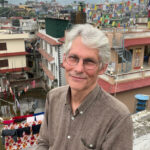

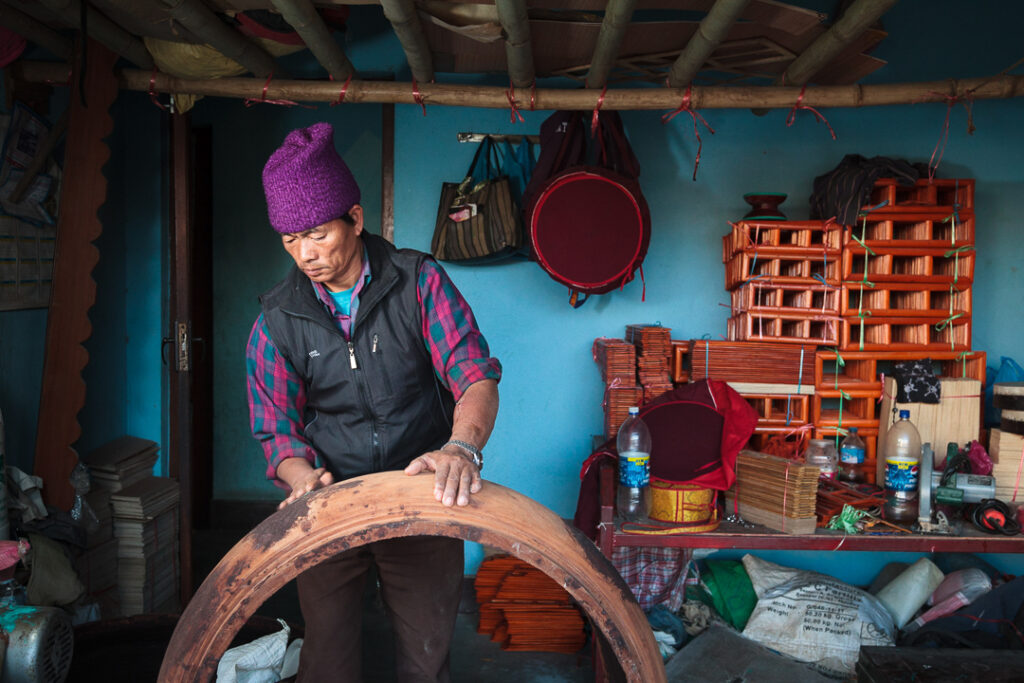


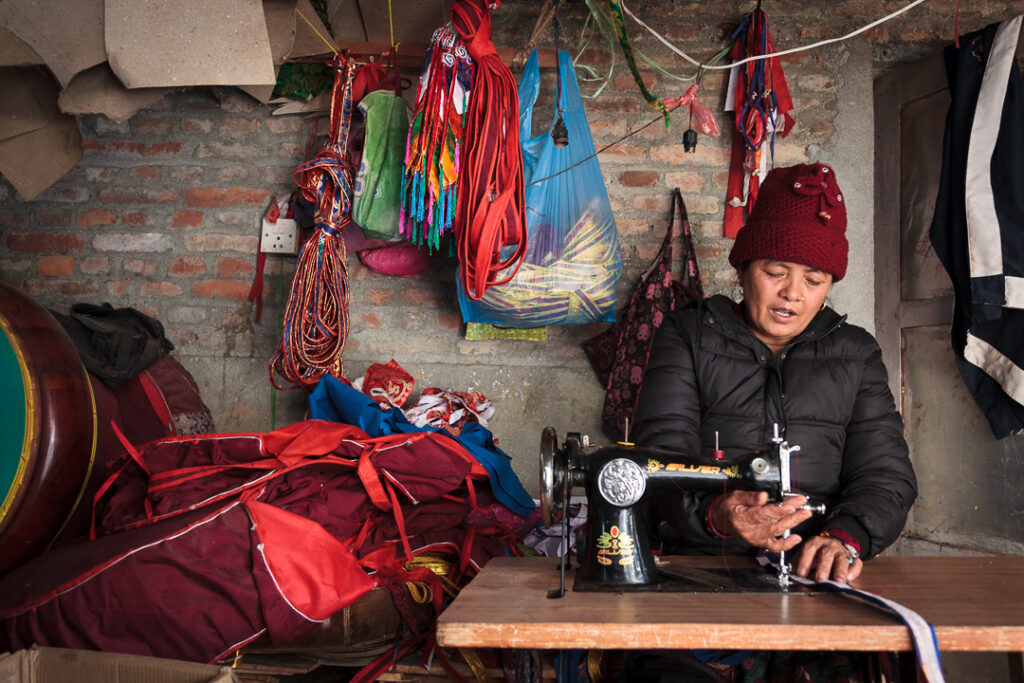

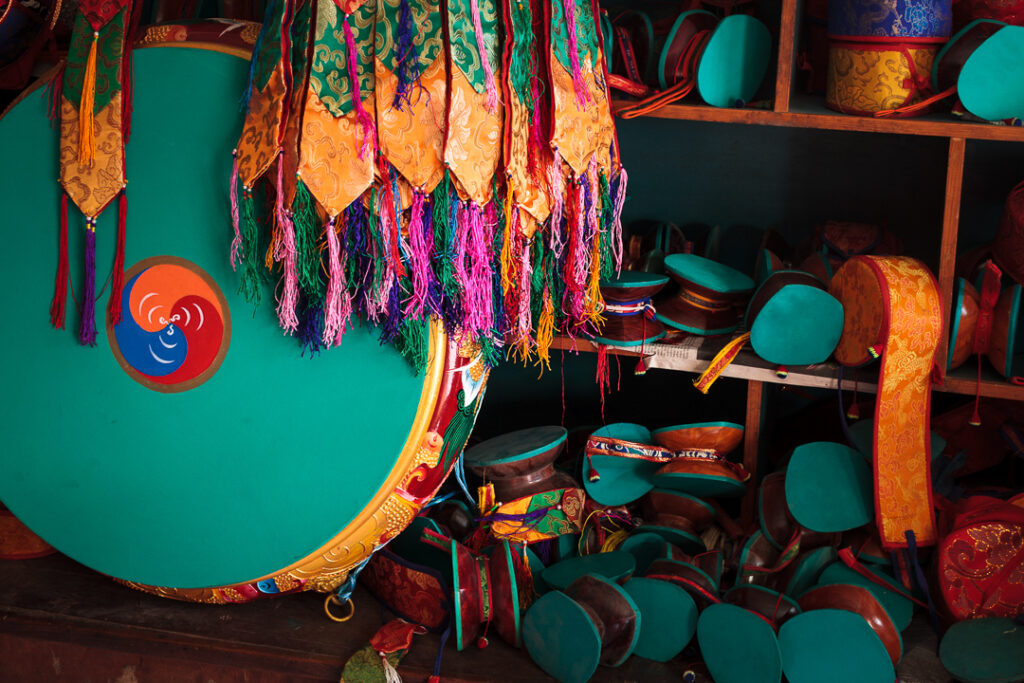
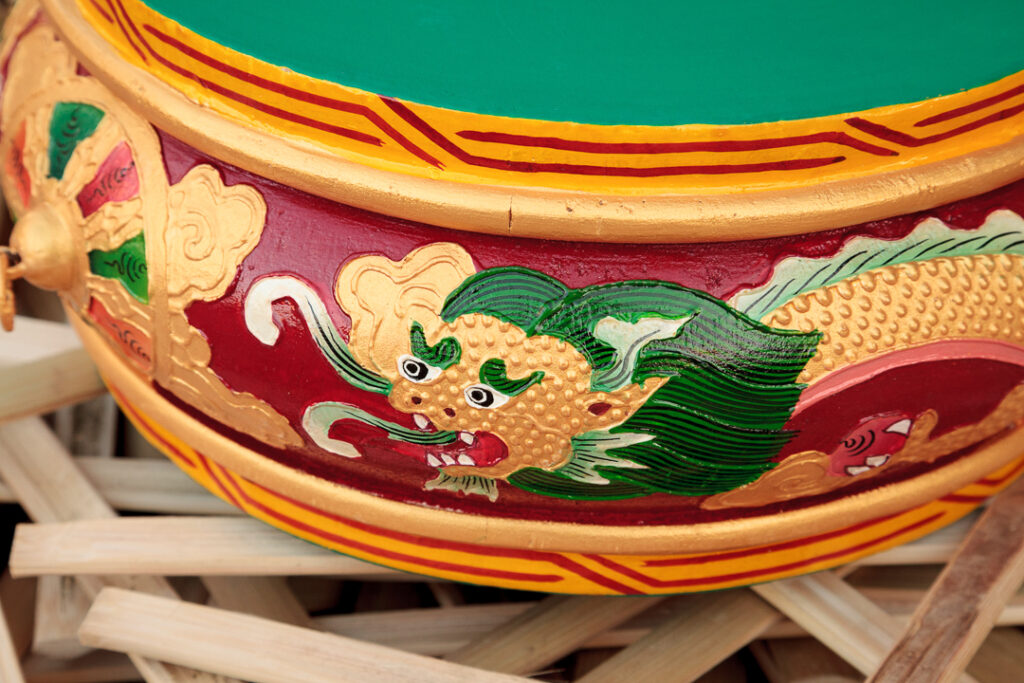
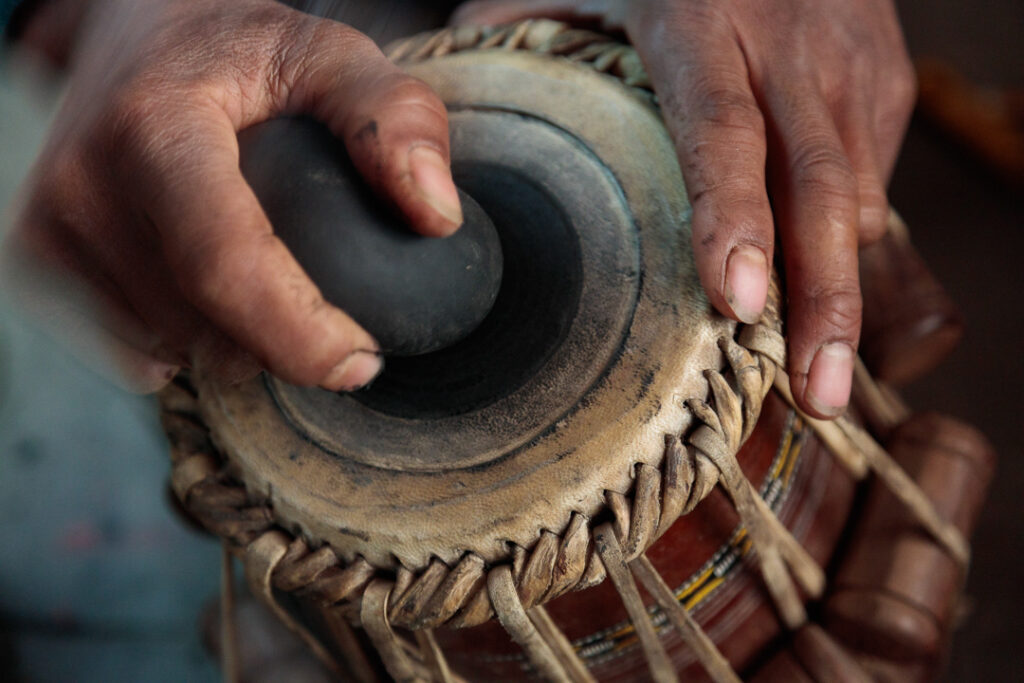


Comments
Thanks you a lot for your article. It’s great. I like it!